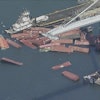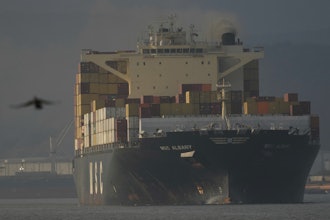TOKYO (AP) - Japan's core machinery orders rose a second straight month in May, helped by strong growth in orders for electrical machinery, the government said Monday.
Seasonally adjusted core machinery orders surged 5.9 percent in May compared to April, the data's biggest gain since June 2006, when a 6.0 percent rise in the figure led the government to upgrade its assessment on core machinery orders the first time in 11 months. Core orders exclude those from electric power firms and those for ships, which are often a source of volatility in the overall data due to their large sizes.
The gain in May was more than twice the average 2.6 percent rise forecast by economists surveyed by Nikkei and Dow Jones Newswires. In April, core orders climbed 2.2 percent from the previous month. In March, the orders fell 4.5 percent from February.
The machinery orders are fluctuating month to month and orders for semiconductor equipment remains a concern, said Itsushi Tachi, an official in the Cabinet Office.
Still, the government has raised its assessment of the machinery orders to ''seesawing,'' or flat, from an earlier assessment of ''weak'' on a gloomy outlook for the country's capital investment.
A 23.1 percent rise in orders for electrical machinery—underpinned by growing demand from Middle Eastern and Asian countries—pushed the May result higher, Tachi told a press briefing on the data.
Machinery orders are widely regarded as a leading indicator of corporate capital investment, which accounts for about 15 percent of Japan's gross domestic product.
The Bank of Japan's quarterly ''tankan'' survey showed earlier this month that major companies plan to increase capital investment 7.7 percent in the fiscal year that started in April, an increase from their initial estimate in March of a 2.9 percent increase for the year.
Unadjusted core orders for May fell 3.1 percent from a year ago for a fourth straight month.














